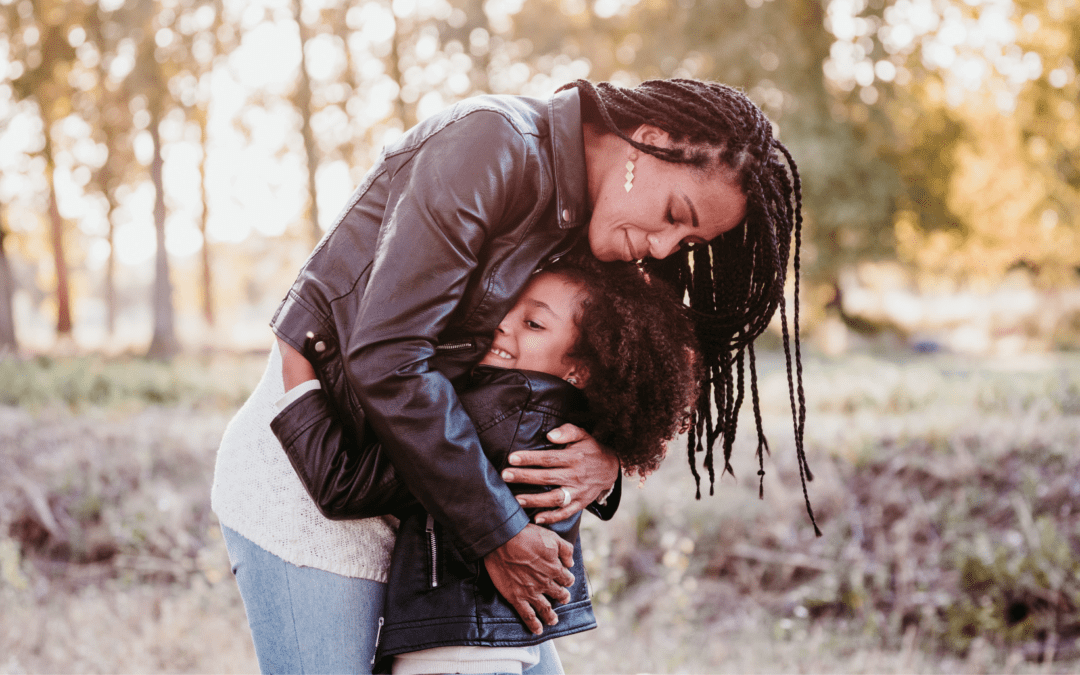As parents, we often feel the pressure to be the strong, steady foundation for our children. We want to shield them from pain, disappointment, and anything else that may upset their world. But in doing so, we can sometimes overlook the value of letting them witness our own emotional experiences. Sharing our emotions with our children can teach them crucial lessons about vulnerability, empathy, and the human experience.
Recently, I had an experience with my daughter that reminded me just how important it is to allow children to feel their emotions, and how beneficial it can be to show them ours as well. My mother, who lives out of town, had been visiting, and when it was time for her to leave, my daughter was understandably heartbroken. As I comforted her, letting her cry in my arms, I realized that this was an important moment—not because I needed to make her feel better right away, but because she needed to know it was okay to feel sad.
Once I had calmed her down, though, something unexpected happened. I found myself overwhelmed by the exhaustion of a long weekend, coupled with the bittersweet moment of saying goodbye to a loved one. Tears welled up in my own eyes. I began to cry, and my daughter, now calm herself, hugged me tightly.
Why Is It Important for Children to See Our Emotions?
In that moment, I was reminded of a powerful truth: our children don’t need us to be emotionally invincible. In fact, by allowing them to see us experience and express emotions, we are teaching them essential life lessons:
- Emotions Are Normal
By showing children that adults experience emotions too, we normalize feelings like sadness, frustration, or even joy. It teaches them that these feelings aren’t something to be ashamed of or avoid, but something to experience and learn from. - You Can Feel Without Being Overwhelmed
When children see adults cry or express emotion in a healthy way, they understand that emotions aren’t something to fear. It demonstrates that even though sadness or anger may feel big in the moment, they are temporary and manageable. Children learn that they too can experience deep emotions without being consumed by them. - Vulnerability is Strength
As parents, we often want to protect our children from witnessing our struggles. But showing them moments of vulnerability, where we ourselves are overwhelmed, can be empowering. It teaches them that vulnerability is not weakness; it’s a sign of emotional courage. We can show them that it’s okay to not always have it together, and that even in moments of struggle, we can find connection and healing. - Empathy Goes Both Ways
When my daughter hugged me as I cried, it wasn’t because I needed her to carry my emotional burden. It was a moment of empathy—a shared understanding that emotions are universal. By allowing her to see my sadness, I gave her the opportunity to offer comfort, which is a valuable life skill. She wasn’t taking on my feelings, but she was witnessing them and responding with kindness.
Letting Children Feel Their Own Emotions
Just as important as showing children our emotions is allowing them the space to feel their own. When my daughter was sad that her grandmother was leaving, my initial instinct was to distract her or make her feel better quickly. But instead, I held her and let her feel the sadness. I validated her emotions without trying to change them.
Why is this important?
- It Teaches Self-Regulation
When we allow children to experience emotions without immediately trying to fix or minimize them, they learn how to self-regulate. They begin to understand that emotions rise and fall naturally and that they are capable of riding those waves without needing someone else to take control. - It Builds Emotional Intelligence
Emotional intelligence is the ability to recognize, understand, and manage our own emotions as well as recognize and empathize with the emotions of others. By validating their feelings, we’re helping our children build this skill. They learn that emotions aren’t something to avoid, but to navigate. - It Strengthens the Parent-Child Bond
When we acknowledge our children’s emotions without judgment or immediate attempts to fix, we build trust. Our children feel seen and understood. This, in turn, deepens the parent-child connection, reinforcing that they can come to us with their feelings, no matter what.
The Balance: Expressing Without Overburdening
While it’s important to show our children that we experience emotions, it’s equally important that we don’t give them the burden of carrying our feelings. There is a balance between being vulnerable and ensuring that children aren’t overwhelmed by adult emotions.
When I cried in front of my daughter, I wasn’t asking her to fix my sadness. I simply allowed her to witness a genuine human moment, and she responded with empathy. It’s important that as parents, we communicate to our children that while it’s okay for them to see us sad or upset, they are not responsible for making us feel better. This way, they learn empathy without feeling the weight of our emotional world.
Emotion is Connection
At the end of the day, allowing our children to see us feel—whether that’s sadness, joy, frustration, or relief—creates a bridge of connection. They learn that emotions are a normal part of life and that they are capable of experiencing and expressing them. They also learn that just as we support them, they too can show empathy and understanding when others are having a tough time.
So the next time you’re feeling sad or overwhelmed, don’t be afraid to let your children see it. Show them that it’s okay to be human. In doing so, you’re teaching them some of life’s most valuable lessons.


Address:
The Cass Center for Psychological and Holistic Well-being Short Hills, NJ 07078
Phone:
1-862-206-3843
Email:
alex@thecasscenter.com

